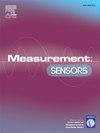通过混合深度学习模型提高老年人活动识别和安全
Q4 Engineering
引用次数: 0
摘要
近年来,人们对人类活动识别(HAR)的兴趣显著增加,主要是由于基于传感器的技术的发展及其在各个领域的应用,包括安全、医疗保健和个人健身。HAR系统一直是众多研究的主题,其中大多数研究集中在识别日常人类活动上。仍然需要解决老年人的独特需求,老年人的身体活动模式因年龄相关因素而有所不同。在特定的老年HAR环境中,出现了准确性、数据收集灵活性和数据集限制(例如,分类少、样本量小)方面的挑战。这些问题阻碍了可靠系统的发展,无法准确识别和跟踪老年人的活动。在本研究中,提出了一种新的老年人活动识别方法,该方法基于自制的具有传感器功能的Android应用程序,该应用程序记录运动特征以产生包含六个不同类别的完整数据集。我们提出了一种结合卷积神经网络(CNN)和长短期记忆(LSTM)的混合模型来解决上述问题,从而提高了准确性和适应性。我们的模型准确率高达98.60%,大大优于早期的方法。当我们使用以下指标进行评估时,模型表现良好:曲线下面积(AUC),召回率,f分数和精度。准确率、召回率和f-score值分别为98.90%、96.79%和96.12%。这项研究的发现为开发有效识别和跟踪老年人活动的系统提供了有价值的见解,从而提高了他们的安全和整体福祉。虽然该模型是为老年人活动检测而设计的,但它可以应用于更广泛的应用范围,包括一般人体活动识别、健身跟踪、康复监测、跌倒检测等。本文章由计算机程序翻译,如有差异,请以英文原文为准。
Enhancing elderly activity recognition and safety through a hybrid deep learning model
In recent years, there has been a significant increase in interest in human activity recognition (HAR), primarily driven by the development of sensor-based technologies and their applications in various fields, including security, healthcare, and personal fitness. HAR systems have been the subject of numerous studies, most of which have concentrated on identifying everyday human activities. There is still a need to address the unique requirements of senior citizens, whose physical activity patterns vary due to age-related factors. Challenges with accuracy, flexibility of data collection, and dataset restrictions (e.g., few classifications and small sample sizes) emerge in the particular geriatric HAR setting. These problems hinder the development of reliable systems that accurately identify and track the activities of the elderly. In this research, a new approach to Elderly Activity Recognition is presented, based on a self-made Sensor-Enabled Android App that records movement features to produce a complete dataset with six different classes. We propose a hybrid model that combines Convolutional Neural Networks (CNN) and Long Short-Term Memory (LSTM) to address the issues mentioned above, thereby offering improved accuracy and adaptability. With a high accuracy of 98.60%, our model outperformed earlier methods by a wide margin. The model performed well when we assessed it using the following metrics: area under the curve (AUC), recall, F-score, and precision. The precision, recall, and f-score values are accordingly 98.90%, 96.79%, and 96.12%. The study’s findings offer valuable insights for developing systems that effectively identify and track the activities of the elderly, thereby enhancing their safety and overall well-being.Although the model is designed for elderly activity detection, it can be applied to a broader range of applications, including general human activity recognition, fitness tracking, rehabilitation monitoring, and fall detection.
求助全文
通过发布文献求助,成功后即可免费获取论文全文。
去求助
来源期刊

Measurement Sensors
Engineering-Industrial and Manufacturing Engineering
CiteScore
3.10
自引率
0.00%
发文量
184
审稿时长
56 days
 求助内容:
求助内容: 应助结果提醒方式:
应助结果提醒方式:


